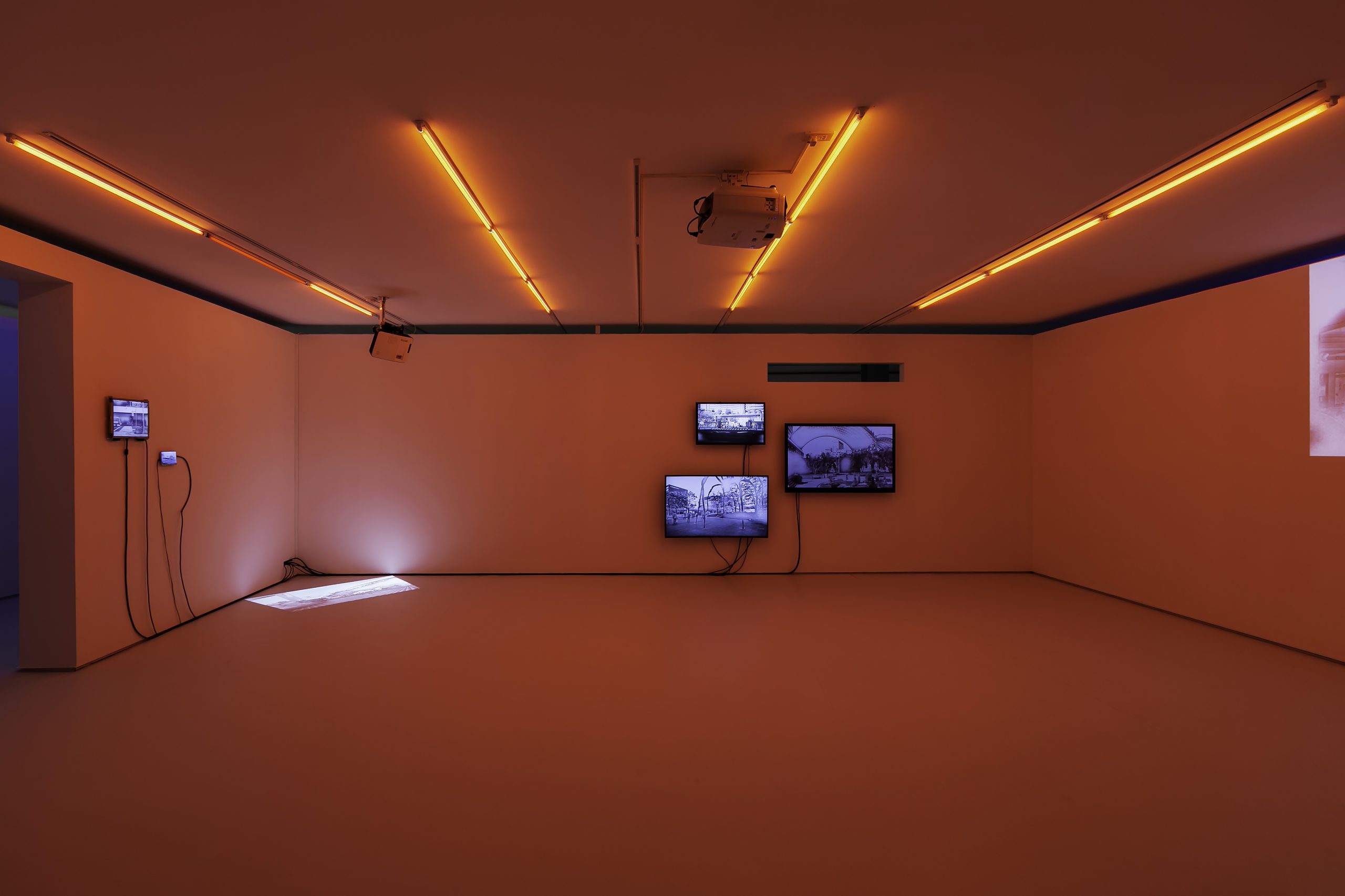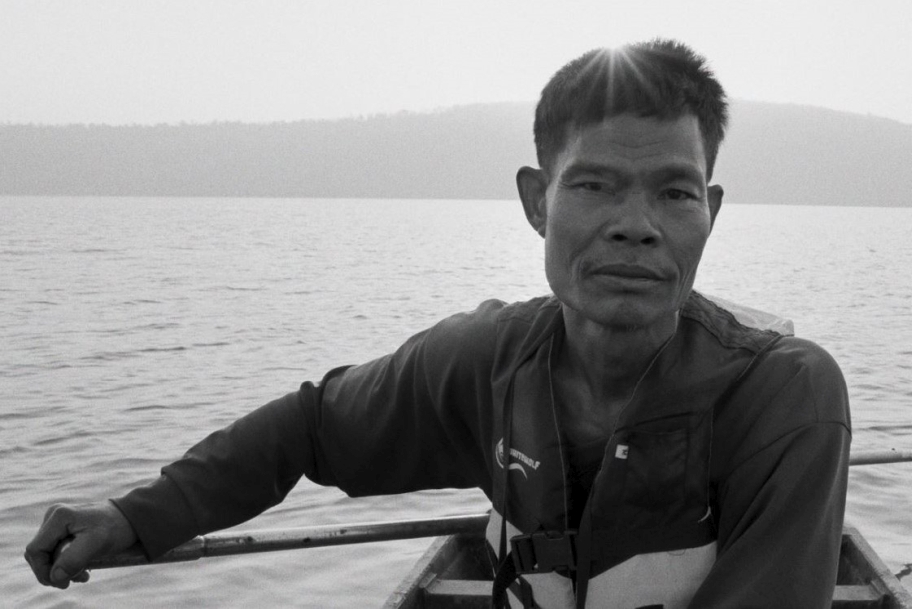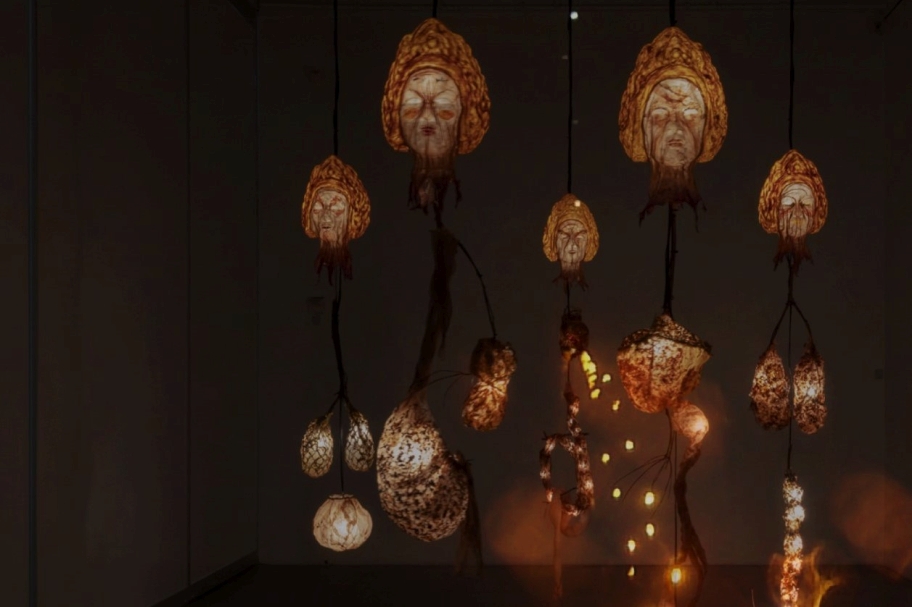Thailand, Visual Arts, 2021
Som
Supaparinya

After graduating from Chiang Mai University’s Faculty of Fine and Applied Arts in the 1990s and earning a postgraduate diploma in Media Arts from Hochschule für Grafik und Buchkunst in Leipzig, Germany, Som Supaparinya returned to her hometown of Lamphun in Thailand’s North to work as a multidisciplinary artist. Inspired by the Chiang Mai Social Installation, an artist-initiated festival that marked a turning point in Thailand’s contemporary art scene, Som cofounded the artist-run Chiang Mai Art Conversation in 2013 to collect, share, and produce local art activities including art map brochures and a website.
Working as a cartographer, Som’s trajectory embodies the complex social history of her native land and of Southeast Asia through sound, photography, and moving images, using a documentary approach. Her video installations, often shown in two or multiple channels, raises critical questions of suppressed infrastructure problems, with a special focus on energy. Effects on the ecosystem are revealed through their embeddedness in different places and in collective memory; she perceives rural and urban landscapes as contested grounds filled with traumatic memories resulting from an unresolved geopolitical history beginning in the colonial era and continuing into the present.
Som’s early works reflect an interest in her cultural heritage and in conflict areas, portraying characters ranging from a family member, to historical figures such as the French explorers traversing the Mekong area, or a Japanese photographer in the North of Thailand during World War II, who was suspected of spying. In My Grandpa’s Route Has been Forever Blocked (2012), Som re-examined the disappearance of her grandfather’s riverine route for his logging business on the Ping River due to dam construction in 1958. This project led her to pay more attention to the politics of energy production and distribution, especially the effects of the 2011 Fukushima disaster. Her installation, Ten Places in Tokyo (2016), demonstrated the top ten highest electricity consumption areas in the Japanese capital. Fascinated by colonial history and contemporary politics/economics in Southeast Asia, Som juxtaposed the threats to the Mekong River from multiple dam constructions and economic expansion by China with the expeditions of 18th-century French explorers in Laos in a two-channel video installation, A Separation of Sand and Island (2018), first shown in 12th Gwangju Biennale, South Korea.
Som Supaparinya is currently working on a new production that investigates the history of local resistance against the state since the internal colonization of Siam at the end of 19th century. Her resistance project is a one-minute time lapse video comprised of 1500 still images capturing multiple sites of resistance around Thailand. This video abruptly reveals absent and traumatic histories, such as the Holy Man’s Rebellion in the Isan province. Her ongoing research also explores the untold history of the Japanese occupation, using Morinosuke Tanaka’s photographs as a starting point to create a map of WWII remnants in the North of Thailand. Through meticulous research, Som persistently interrogates and presents little-known or repressed histories by surveying and excavating counternarratives from her homeland.
Text: Gridthiya Gaweewong



